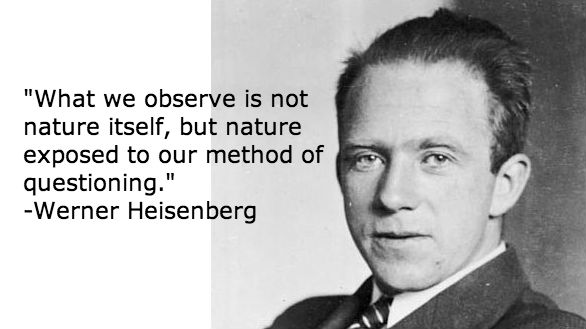Apps and Intimate Relationships

Remember that famous tag line, “Reach out and touch someone?” AT&T first used it for an ad campaign in the early 1980s to convey the power of telephones to bring people together across geographic boundaries (the corporation was trying to sell long-distance calling at the time — a service that’s become increasingly difficult to promote in the age of Skype and other voice-over IP services). By giving us an array of tools, formats, and platforms to connect to others, apps have transformed what it means to reach out and touch someone. Whether exchanging a private joke with one friend through Snapchat or WhatsApp Messenger or sharing a memorable experience with eight hundred friends on Facebook or Tumblr, connecting with others has never been easier — or more constant. Whether, and in which ways, these developments are good or bad for the quality of our interpersonal relationships constitutes the focus of this chapter.
Just how have our deeply rooted, long-term connections to other people been affected by the unprecedented connectivity afforded by new media technologies? Our investigations suggest that this connectivity certainly has its value — helping friends and family keep in touch when separated by geography; providing opportunities for young people with similar interests to find and interact with one another; and making it easier for some youth to disclose their personal feelings to others.1 And yet there may be a dark side to mediated communication, as we’ll see when we consider the negative consequences of conducting relationships at arm’s length, round-the-clock, and simultaneously, and only with those who reinforce one’s worldview. Ultimately, we find that the quality of our relationships in this app era depends on whether we use our apps to bypass the discomforts of relating to others or as sometimes risky entry points to the forging of sustained, meaningful interactions.
Talking with Technology
Today’s youth communicate in fundamentally different wa ys from their predigital counterparts. With their ability to transcend geographic and temporal barriers, Internet-enabled cell phones, tablets, and laptops — each with their arsenal of apps for all occasions — have altered what can be said, where, and to whom. Perhaps the most notable change is the constancy and immediacy of communication made possible by mobile technology. As of 2013, the Pew Research Center reports that 78 percent of all adolescents in the United States own a cell phone.2 This statistic means that for nearly four out of every five American teens, their family members and friends are never more than a text message (or tweet or Snapchat) away. The data on teens’ text messaging behaviors suggest that teens take full advantage of this ability to engage in frequent, on the-run communication. Sixty-three percent of teens say they text every day with people in their lives, and the typical teen sends about sixty text messages per day (among older girls, that number jumps to a hundred).3 And now, with the wide spread use of app-filled smartphones, the range of operations that teens can perform on the go has extended far beyond phone calls and texting.
What are teens saying through their apps, and to whom? As it turns out, a considerable portion of teens’ computer mediated communication is dedicated to making (and some times breaking) on-the-fly arrangements to meet up with their friends in person. In one of our studies, we asked teens what they would miss most about not having a cell phone.4 Sixteen year-old Justin answered, “Just being able to make plans on the go, and stuff, because me and my friends, we don’t really plan things. We just go out.” The app mentality supports the belief that just as information, goods, and services are always and immediately accessible, so too are people. Scholars in the mobile communication field have dubbed such in-the-moment planning “microcoordination” and observe that it can slide into “hypercoordination” when teens start to feel left out of their social circles if separated from their mobile devices for any period of time.5
Not all mediated communications serve a logistical purpose; many function as “virtual taps on the shoulder,” establishing and maintaining a sense of connection among friends who are physically separated.6 When asked what he and his friends text each other about, one of our study participants, fourteen-year-old Aaron, explained, “Just like, ‘How was school? How’s life? What you been up to?’ because I think texting is, like, an easy way to keep in contact.” Aaron noted that such conversations sometimes last throughout the day. There may be breaks while one or both friends go to class or eat dinner, but before long they return to their cell phone screens to resume their conversation. For seventeen-year-old Jenni, texting is a way to fill time when there is nothing else to do: “[Texting] is kind of just like touching base, and just kind of like when I am bored, and I am like, hmm, what can I do? Meghan is always around. I will talk to her.”
Though most common among friends and romantic partners, microcoordination and virtual taps on the shoulder have become standard among families as well. Cell phones allow family members to make plans and coordinate their schedules in a more fluid, impromptu way than was feasible in years past. If a teen child decides in the middle of the day that she wants to go to a friend’s house after school rather than return home, it’s easy to call or text a parent for permission. And, as discussed in the previous chapter, parents can — and do — use cell phones and Facebook to check in with their college-age children and stay plugged into the daily rhythm of their lives.7
Accessibility isn’t the only new and noteworthy quality associated with today’s communication technologies. Social networking sites have transformed many social interactions into considerably more public affairs than they would have been in predigital times. In addition to phone calls and in-person communiques, the Facebook wall offers a new — and very public — means to plan and chronicle social events and shared experiences. Who’s invited to a party and who’s not becomes a matter of public record, as do all activities — however cringe-worthy — that are captured and uploaded by a cell phone camera. The beginnings and endings of relationships are similarly documented in a far more public manner than in years past.8
While Facebook communications are more public than the typical face-to-face conversation, other computer-mediated communications may feel more private to young people. Texting and instant messaging typically involve just two conversation partners, making them more intimate than wall-to-wall exchanges on Facebook. For some youth, these typed exchanges may feel even more intimate than face-to-face conversations. The fact that conversation partners look into a screen instead of each other’s eyes, coupled with the fact that — more often than not — they don’t occupy the same physical space may make it feel less risky and uncomfortable to share personal feelings with another person.9 One of the teens we interviewed, fifteen-year-old Christina, explained why she prefers text-based forms of communication: “I am not a good person with feelings, and, like, I am not that good with saying my feelings face to face sometimes because I don’t like people to see how I think and what I am feeling.” Other research studies have documented a similar preference among youth for text based forms of self-disclosure.10
In many ways, today’s social interactions bear markings of the app. Apps exist to maximize convenience, speed, and efficiency. When you want something, it’s there for your immediate use. When you’re done with it, switch it off (provided you disable the push notifications that will otherwise pop up unsolicited, alerting you to new content). If you tire of an app’s wares, delete it. Apps are under our control (though our increasing dependency on them places us in danger of coming under their control); they’re available around the clock and seemingly risk free. Much the same could be said of the way today’s youth communicate through digital media technologies.
A complete list of sources can be found in the book. The above is an excerpt from the book The App Generation: How Today’s Youth Navigate Identity, Intimacy, and Imagination in a Digital World by Howard Gardner and Katie Davis. The above excerpt is a digitally scanned reproduction of text from print. Although this excerpt has been proofread, occasional errors may appear due to the scanning process. Please refer to the finished book for accuracy.
© 2013 Howard Gardner and Katie Davis, Authors of The App Generation: How Today’s Youth Navigate Identity, Intimacy, and Imagination in a Digital World
Author Bio
Howard Gardner, co-author of The App Generation: How Today’s Youth Navigate Identity, Intimacy, and Imagination in a Digital World, is Hobbs Professor of Cognition and Education at the Harvard Graduate School of Education and senior director of Harvard Project Zero, an educational research group. He is renowned as father of the theory of multiple intelligences. He lives in Cambridge, MA. For more information on Howard please visit http://howardgardner.com.
Katie Davis, co-author of The App Generation: How Today’s Youth Navigate Identity, Intimacy, and Imagination in a Digital World, is assistant professor, University of Washington Information School, where she studies the role of digital media technologies in adolescents’ lives. She is a former member of the Project Zero team. She lives in Seattle, WA. For more information on Katie please visit http://katiedavisresearch.com, and follow her on Twitter.
For more information about the book, please visit http://www.theappgenerationbook.com
Image courtesy of Shutterstock




